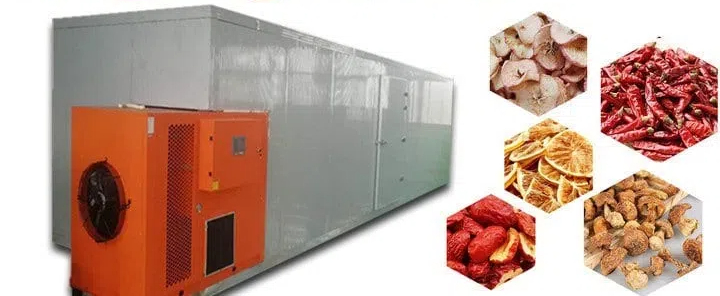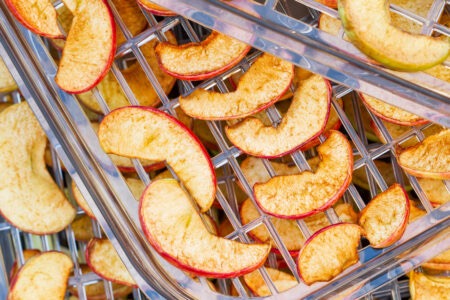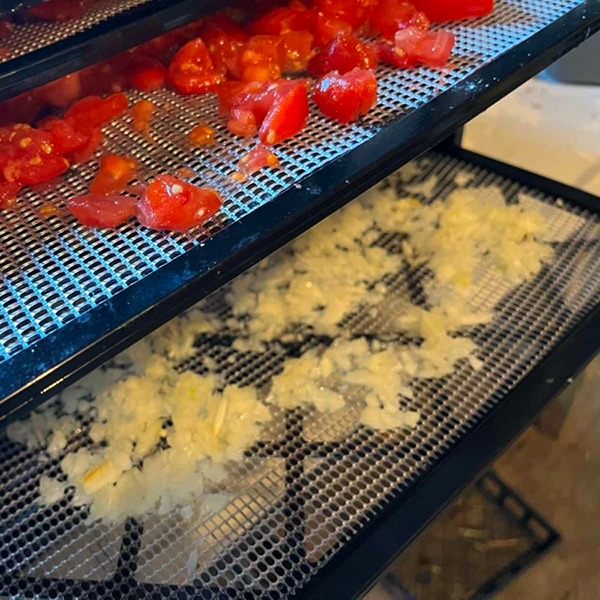
Content Menu
● Introduction
● What Are Room Type Drying Machines?
● Key Benefits of Room Type Drying Machines
>> 1. Consistent and Uniform Drying
>> 2. Preservation of Nutritional Value and Flavor
>> 3. Extended Shelf Life
>> 4. Versatility Across Food Products
>> 5. Energy Efficiency
>> 6. Increased Production Capacity
>> 7. Improved Food Safety
>> 8. Customizable Drying Parameters
>> 9. Reduced Labor Costs
>> 10. Year-Round Production Capability
● Advanced Features of Room Type Drying Machines
>> Intelligent Control Systems
>> Multi-Stage Drying Processes
>> Integration with Other Processing Equipment
>> Energy Recovery Systems
● Applications of Room Type Drying Machines
● Case Study: Implementing Room Type Drying Machines in a Fruit Processing Facility
● Future Trends in Room Type Drying Machine Technology
● Environmental Impact and Sustainability
>> Reduced Food Waste
>> Lower Carbon Footprint
>> Water Conservation
● Economic Benefits for Manufacturers
>> Expanded Product Lines
>> Premium Pricing Potential
>> Reduced Storage and Transportation Costs
● Challenges and Considerations
>> Initial Investment
>> Training and Expertise
>> Product-Specific Optimization
● Conclusion
● Frequently Asked Questions
>> 1. What types of food products can be dried using room type drying machines?
>> 2. How do room type drying machines compare to other drying methods in terms of energy efficiency?
>> 3. What are the key factors to consider when selecting a room type drying machine for a food processing facility?
>> 4. How do room type drying machines contribute to food safety and quality control?
>> 5. What maintenance is required for room type drying machines to ensure optimal performance?
● Citations:
Introduction
In the ever-evolving food processing industry, room type drying machines have emerged as a game-changing technology, offering numerous benefits for manufacturers and consumers alike. These advanced drying systems provide an efficient and controlled environment for preserving a wide variety of food products, from fruits and vegetables to meats and seafood. This article will explore the many advantages of room type drying machines and their impact on food quality, safety, and production efficiency.

What Are Room Type Drying Machines?
Room type drying machines, also known as food dryer rooms or drying chambers, are large-scale industrial drying systems designed to remove moisture from food products in a controlled environment. These machines consist of a sealed room equipped with heating elements, air circulation systems, and humidity controls to create optimal drying conditions.
Key Benefits of Room Type Drying Machines
1. Consistent and Uniform Drying
One of the primary benefits of room type drying machines is their ability to provide consistent and uniform drying results. The controlled environment ensures that all food products within the chamber receive equal exposure to heat and air circulation, resulting in evenly dried products.
2. Preservation of Nutritional Value and Flavor
Room type drying machines operate at lower temperatures compared to traditional drying methods, which helps preserve the nutritional content and natural flavors of food products. This gentle drying process ensures that vitamins, minerals, and other essential nutrients are retained, making the dried foods both nutritious and flavorful.
3. Extended Shelf Life
By removing moisture from food products, room type drying machines significantly extend their shelf life. The reduced water content creates an inhospitable environment for microorganisms, preventing spoilage and preserving food quality for extended periods.
4. Versatility Across Food Products
Room type drying machines are highly versatile and can be used to dry a wide range of food products, including fruits, vegetables, meats, fish, grains, and even dairy products. This versatility makes them suitable for various segments of the food industry, from small-scale artisanal producers to large industrial manufacturers.
5. Energy Efficiency
Modern room type drying machines are designed with energy efficiency in mind. Many models incorporate heat recovery systems, insulation, and efficient air circulation mechanisms to minimize energy consumption. This not only reduces operational costs but also contributes to a smaller environmental footprint.
6. Increased Production Capacity
Room type drying machines offer significant advantages in terms of production capacity. These large-scale systems can accommodate substantial volumes of food products, allowing manufacturers to increase their output and meet growing market demands.
7. Improved Food Safety
The controlled environment of room type drying machines helps ensure food safety by preventing contamination and reducing the risk of microbial growth. The enclosed drying process protects food products from external contaminants, while the removal of moisture inhibits the growth of harmful bacteria and molds.
8. Customizable Drying Parameters
Room type drying machines offer a high degree of customization, allowing operators to adjust temperature, humidity, and airflow parameters to suit specific food products. This flexibility ensures optimal drying conditions for different types of foods, resulting in superior quality end products.
9. Reduced Labor Costs
Automated room type drying machines require minimal manual intervention, reducing labor costs and the potential for human error. Once the drying cycle is initiated, the system operates autonomously, freeing up staff to focus on other critical tasks.
10. Year-Round Production Capability
Unlike traditional sun drying methods, room type drying machines are not dependent on weather conditions. This allows for year-round production, ensuring a consistent supply of dried food products regardless of seasonal variations.

Advanced Features of Room Type Drying Machines
Intelligent Control Systems
Modern room type drying machines are equipped with advanced control systems that allow for precise monitoring and adjustment of drying parameters. These intelligent systems often include:
- Touch screen interfaces for easy operation
- Remote monitoring capabilities
- Data logging and analysis tools
- Automated temperature and humidity controls
Multi-Stage Drying Processes
Some advanced room type drying machines offer multi-stage drying capabilities, allowing for different temperature and humidity settings at various stages of the drying process. This feature is particularly useful for products that require specific drying profiles to achieve optimal quality and texture.
Integration with Other Processing Equipment
Room type drying machines can be integrated with other food processing equipment to create a seamless production line. This integration can include:
- Automated loading and unloading systems
- Sorting and grading equipment
- Packaging machines
Energy Recovery Systems
To maximize energy efficiency, many room type drying machines incorporate heat recovery systems. These systems capture and recycle heat from the exhaust air, reducing overall energy consumption and operational costs.
Applications of Room Type Drying Machines
Room type drying machines find applications across various sectors of the food industry:
1. Fruit and Vegetable Processing
2. Meat and Seafood Preservation
3. Herb and Spice Production
4. Grain and Cereal Processing
5. Snack Food Manufacturing
6. Pet Food Production
7. Pharmaceutical and Nutraceutical Industries
Case Study: Implementing Room Type Drying Machines in a Fruit Processing Facility
To illustrate the benefits of room type drying machines, let's consider a case study of a fruit processing facility that implemented this technology:
A medium-sized fruit processing company in California was looking to expand its product line to include dried fruit snacks. They decided to invest in a room type drying machine to improve their production capabilities.
Results:
- Production capacity increased by 300%
- Energy consumption reduced by 40% compared to traditional drying methods
- Product quality and consistency improved significantly
- Shelf life of dried fruit products extended from 6 months to 18 months
- Labor costs reduced by 25% due to automation
This case study demonstrates the tangible benefits that room type drying machines can bring to food processing operations.
Future Trends in Room Type Drying Machine Technology
As technology continues to advance, we can expect to see several innovations in room type drying machines:
1. Artificial Intelligence Integration: AI-powered systems that can optimize drying parameters based on real-time data and product characteristics.
2. IoT Connectivity: Enhanced connectivity allowing for remote monitoring and control of multiple drying units across different locations.
3. Sustainable Energy Sources: Integration with renewable energy sources such as solar or wind power to further reduce environmental impact.
4. Advanced Sensor Technology: Implementation of more sophisticated sensors to monitor product quality throughout the drying process.
5. Hybrid Drying Systems: Combination of different drying technologies within a single unit for enhanced efficiency and product quality.
Environmental Impact and Sustainability
Room type drying machines not only offer benefits in terms of food preservation and production efficiency but also contribute to environmental sustainability in several ways:
Reduced Food Waste
By extending the shelf life of food products, room type drying machines help reduce food waste throughout the supply chain. This is particularly important in addressing global food security challenges and minimizing the environmental impact of food production.
Lower Carbon Footprint
The energy efficiency of modern room type drying machines translates to a lower carbon footprint compared to traditional drying methods. This aligns with the growing focus on sustainable food production practices and helps companies meet their environmental goals.
Water Conservation
Drying food products reduces their water content, making them lighter and more compact. This results in reduced transportation costs and lower fuel consumption, further contributing to environmental conservation efforts.
Economic Benefits for Manufacturers
Investing in room type drying machines can yield significant economic benefits for food manufacturers:
Expanded Product Lines
The versatility of room type drying machines allows manufacturers to expand their product lines to include a wide range of dried food products. This diversification can open up new market opportunities and revenue streams.
Premium Pricing Potential
High-quality dried foods produced using room type drying machines often command premium prices in the market. The superior texture, flavor retention, and nutritional value of these products justify higher price points, potentially increasing profit margins for manufacturers.
Reduced Storage and Transportation Costs
Dried food products have reduced volume and weight compared to their fresh counterparts. This leads to lower storage and transportation costs, improving overall operational efficiency and profitability.
Challenges and Considerations
While room type drying machines offer numerous benefits, there are some challenges and considerations to keep in mind:
Initial Investment
The upfront cost of purchasing and installing a room type drying machine can be significant. However, the long-term benefits in terms of increased production capacity, energy savings, and product quality often justify the investment.
Training and Expertise
Operating room type drying machines effectively requires specialized knowledge and skills. Manufacturers need to invest in training their staff to ensure optimal use of the equipment and maximize its benefits.
Product-Specific Optimization
Different food products may require specific drying parameters for optimal results. Manufacturers need to invest time and resources in developing and fine-tuning drying profiles for each product type to achieve the best quality and efficiency.
Conclusion
Room type drying machines offer numerous benefits to the food processing industry, including improved product quality, increased production capacity, energy efficiency, and enhanced food safety. As technology continues to evolve, these machines will play an increasingly important role in meeting the growing demand for high-quality dried food products.
The versatility, consistency, and efficiency of room type drying machines make them an invaluable asset for food manufacturers looking to expand their product lines, improve quality, and increase profitability. By investing in this advanced drying technology, companies can stay competitive in the ever-changing food industry landscape while meeting consumer demands for nutritious and flavorful dried food products.
As the global population continues to grow and the need for efficient food preservation methods increases, room type drying machines are poised to become an essential component of sustainable and efficient food production systems. Their ability to produce high-quality dried foods while minimizing energy consumption and waste aligns perfectly with the industry's goals of improving food security and reducing environmental impact.

Frequently Asked Questions
1. What types of food products can be dried using room type drying machines?
Room type drying machines are highly versatile and can be used to dry a wide variety of food products, including fruits, vegetables, meats, fish, grains, herbs, and spices. These machines can accommodate different shapes and sizes of food items, making them suitable for diverse applications in the food processing industry.
2. How do room type drying machines compare to other drying methods in terms of energy efficiency?
Room type drying machines are generally more energy-efficient compared to traditional drying methods. They often incorporate heat recovery systems, efficient air circulation mechanisms, and advanced insulation to minimize energy consumption. This results in lower operational costs and a reduced environmental footprint compared to conventional drying techniques.
3. What are the key factors to consider when selecting a room type drying machine for a food processing facility?
When choosing a room type drying machine, consider the following factors:
- Production capacity requirements
- Types of food products to be dried
- Available space in the facility
- Energy efficiency ratings
- Customization options for drying parameters
- Integration capabilities with existing equipment
- Maintenance and cleaning requirements
- Budget constraints
4. How do room type drying machines contribute to food safety and quality control?
Room type drying machines enhance food safety and quality control through:
- Controlled environment preventing external contamination
- Uniform drying conditions ensuring consistent product quality
- Reduced risk of microbial growth due to moisture removal
- Preservation of nutritional value and flavor profiles
- Customizable parameters for optimal drying of different food products
5. What maintenance is required for room type drying machines to ensure optimal performance?
To maintain optimal performance of room type drying machines:
- Regularly clean and sanitize the drying chamber and trays
- Inspect and replace air filters as needed
- Check and calibrate temperature and humidity sensors
- Lubricate moving parts according to manufacturer specifications
- Conduct routine inspections of heating elements and air circulation systems
- Schedule professional maintenance checks at recommended intervals
By following these maintenance practices, operators can ensure the longevity and efficiency of their room type drying machines, maximizing the benefits of this advanced drying technology.
Citations:
[1] https://www.linkedin.com/pulse/case-study-dry-aging-benefits-drying-room-humiscope
[2] https://www.dryeratech.com/the-future-of-drying-hang-type-drying-machines-explained.html
[3] https://tunelgroup.com/drying-rooms-in-the-food-industry-essential-technology-for-long-term-food-storage/
[4] https://www.youtube.com/watch?v=qtC36z0HleQ
[5] https://www.foodinfotech.com/dryers-in-food-processing-enhancing-shelf-life-and-safet/
[6] https://www.bxdrymachine.com/faq
[7] https://carriervibrating.com/resources/blog/achieving-optimal-drying-results-for-pressed-fruits-and-vegetables/
[8] https://www.bxdryer.com/news/industry-news/industrial-food-dryer-machine-news.html
[9] https://www.french-fries-machine.com/heat-pump-dryer-faqs/
[10] https://www.youtube.com/watch?v=sVtMuWXlyFI
[11] https://www.gemdryers.com/industrial-food-dryer-how-does-it-benefit-the-food-processing-industry/
[12] https://hgic.clemson.edu/factsheet/drying-foods/
[13] https://www.thepurposefulpantry.com/dehydrating-faq/
[14] https://www.foodinfotech.com/dryers-in-food-processing-enhancing-shelf-life-and-safety/
[15] https://www.wintersteiger.com/dry-protect/en/industry-solutions/hygienic-drying/production-plants-food-industry
[16] https://microway.com.tr/en/room-type-drying-machines-revolutionizing-turkmenistans-approach-to-preservation/
[17] https://airtekdehydrator.com/blog/how-to-create-a-drying-room/
[18] https://www.istockphoto.com/photos/drying-machine
[19] https://www.shutterstock.com/search/drying-machines
[20] https://www.istockphoto.com/photos/apartment-washer-dryer
[21] https://www.youtube.com/watch?v=rR2G5UO-5Ms
[22] https://www.youtube.com/watch?v=hchOCBFV1_I
[23] https://www.whirlpool.com/blog/washers-and-dryers/types-of-dryers-buying-guide.html
[24] https://www.alamy.com/stock-photo/drying-machine.html
[25] https://www.youtube.com/watch?v=OW3KndzbJXs
[26] https://www.youtube.com/watch?v=LCTpDVgQXGI
[27] https://www.youtube.com/watch?v=mtDzdYoyeR8
[28] https://www.youtube.com/watch?v=g432mYnHJ5Q
[29] https://www.istockphoto.com/photos/food-dehydrator
[30] https://www.youtube.com/watch?v=lLANb_bbfy8
[31] https://www.lowes.com/n/buying-guide/dryer-buying-guide
[32] https://www.frigidairearabia.com/buying-guides/clothes-dryer/











